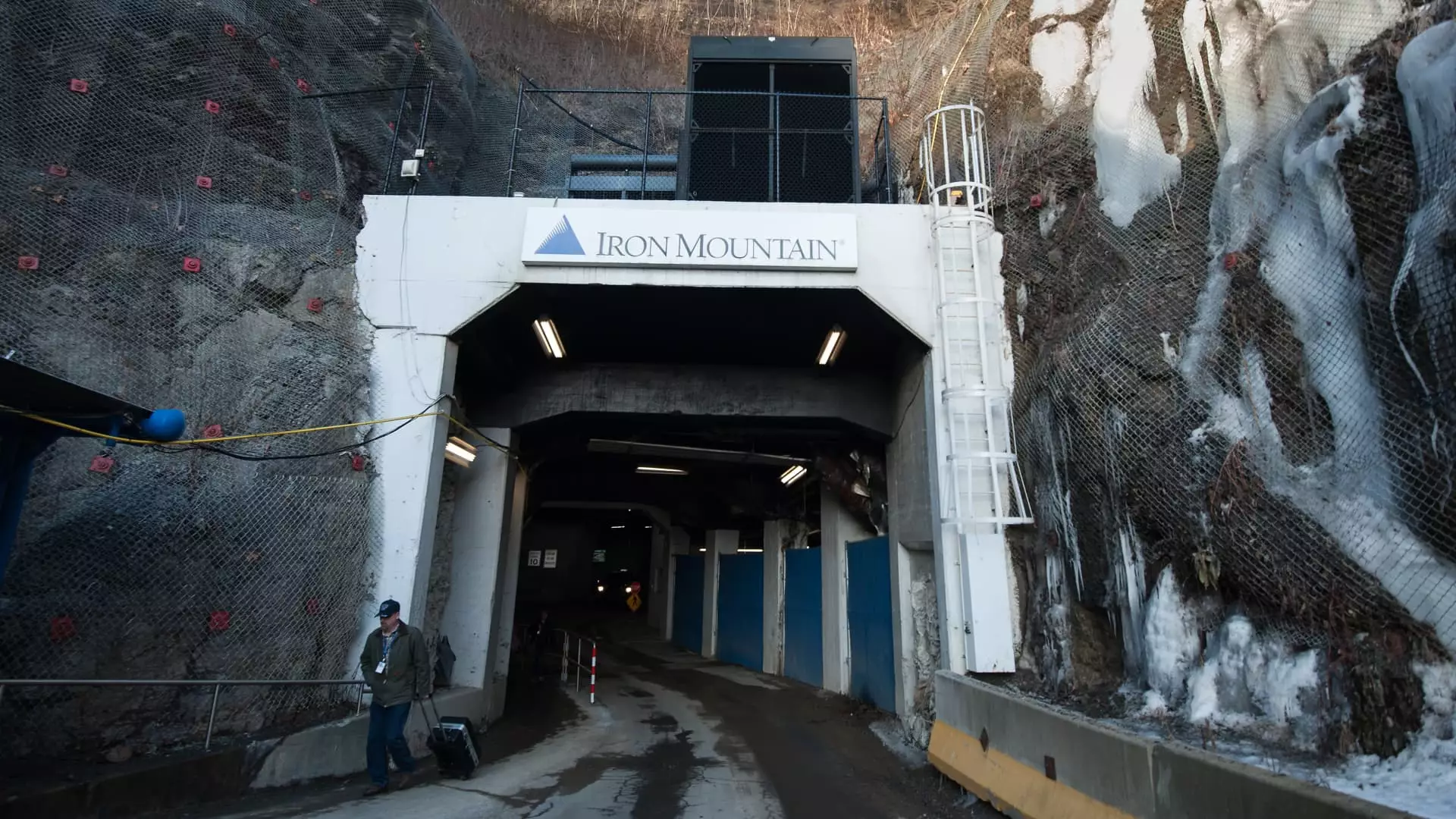On a seemingly ordinary Tuesday in the Oval Office, the air was thick with the promise of change. Elon Musk, an emblem of innovation and a touchstone for disruptive thinking, stood beside President Donald Trump, and the topic at hand was nothing short of controversial: the inefficiencies within the federal government. Musk, in his characteristic fashion, didn’t hold back. Among the issues he raised was a limestone mine, a location where critical federal retirement paperwork has been stored for decades. Musk’s observations revealed a bygone era embedded in the remains of infrastructure dating back to 1955—an image that vividly portrays a stagnant system mired in inefficiency.
Musk’s anecdotes about the mine served not just as a critique but as a call to action. He pointed out that the mine’s archaic elevator mechanics have a direct impact on the pace of processing retirement applications for federal employees, leaving many to ponder, “How is this still a reality in a tech-driven age?” His vivid framing of the mine’s conditions laid bare the glaring disjunction between the advancing technological landscape and the governmental apparatus that appears resistant to change.
This encounter, however, had immediate consequences beyond Musk’s discourse. Iron Mountain, the company overseeing the limestone mine, faced swift repercussions in the stock market—a more than 10% drop in shares within mere days. CEO Bill Meaney took center stage to alleviate rising fears, framing the efficiency push led by Musk not as a threat, but rather as an “opportunity for growth.” With federal agencies increasingly looking to digitize and modernize their operations, Iron Mountain’s capabilities in data transformation positioned them favorably amidst looming scrutiny.
Meaney emphasized the dramatic disparity between their revenue streams. While the mine generated a mere $10 million from physical document storage, their data facilities amassed a staggering $130 million. This bifurcation underscores a crucial pivot: the transformation from antiquated methods of storage to a more agile, digital-first approach. Yet, the stark realization remains that government contracts, such as those with Iron Mountain, could face reevaluation in light of Musk’s declarations.
The episode invites a deeper reflection on the nature of change in bureaucratic systems. While Musk’s keen observations have highlighted the inefficiencies, real change within entrenched governmental operations is a labyrinthine task. The quest for efficiency under the Department of Government Efficiency (DOGE) must overcome not only logistical hurdles but also cultural resistance within the agencies it targets.
Conversely, it remains essential for privately contracted firms, particularly those intertwined with the federal government, to adapt nimbly. Analysts like Wells Fargo’s Eric Luebchow posited that reactions to Musk’s comments were exaggerated. The consensus among certain financial analysts is that Iron Mountain’s business is far from singularly dependent on government contracts. Underneath this tumult lies an opportunity for firms willing to pivot: as government entities scramble to innovate, providers like Iron Mountain must align their services to meet fast-evolving expectations.
As stock prices ebb and flow in response to Musk’s critiques, it raises an essential question: Does the market truly grasp the multivariate landscape in which these firms operate? Analysts have started to frame Musk’s comments as an overblown predicament, suggesting that Iron Mountain’s financial architecture allows for a buffer against the potential loss of federal contracts. Moreover, the necessity for record retention enshrined in law fortifies Iron Mountain’s position, indicating that even in times of change, residual demand for their services will prevail.
Musk’s remarks did more than draw attention to one mine; they peeled back the layers of a sluggish government system that has long awaited a thorough overhaul. Whether this encounter heralds transformative change or spirals into mere rhetoric remains to be seen. As the dust settles, the duration and effectiveness of Musk’s initiative will be determined not just by newfound efficiencies but by the adaptability of institutions entrenched in their ways.
Elon Musk’s bold foray into discussions of governmental inefficiency reveals a critical juncture—a moment where government and private enterprise can converge to foster genuine progress. As the federal landscape is scrutinized and reimagined, the responsibility lies with both public sectors and private partners to embrace transformative strategies. The elevation of efficiency from a theoretical discussion to actionable steps may very well define the future functionality of governmental operations. The journey ahead calls for innovation, cooperation, and an unwavering commitment to breaking barriers that have long stifled both sectors.

